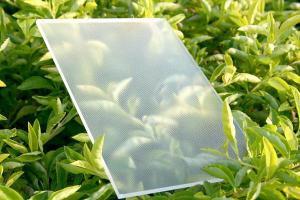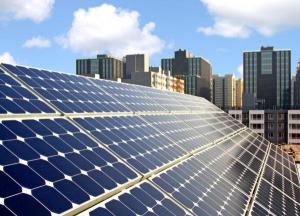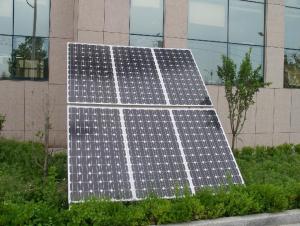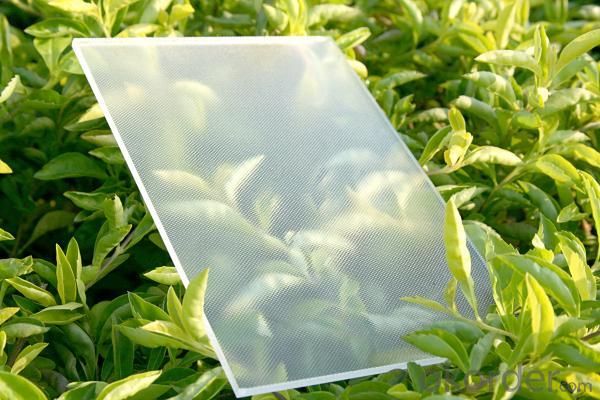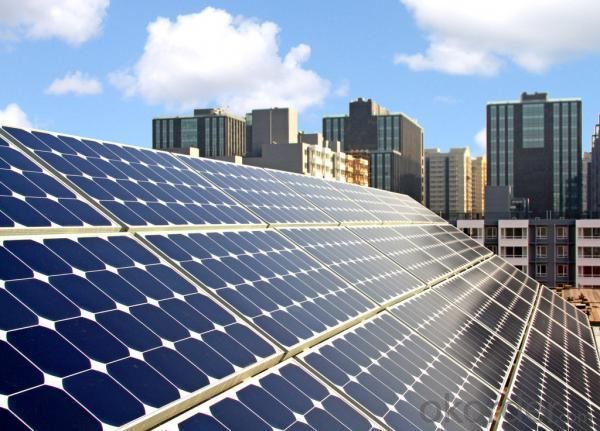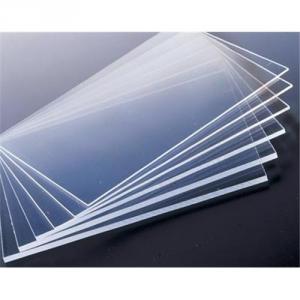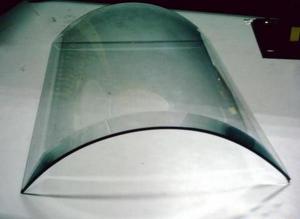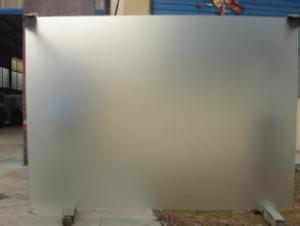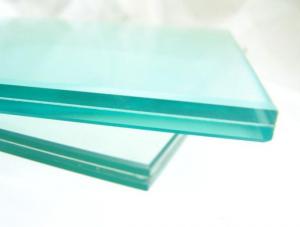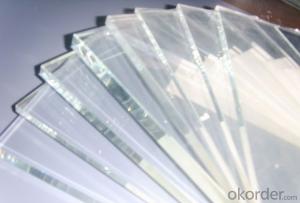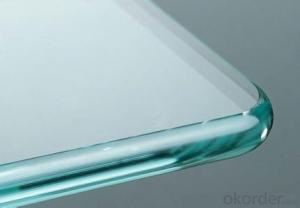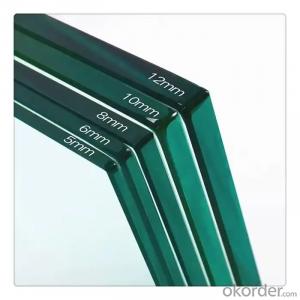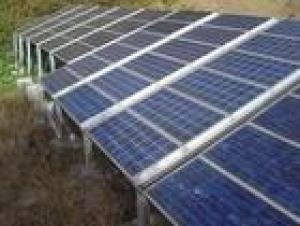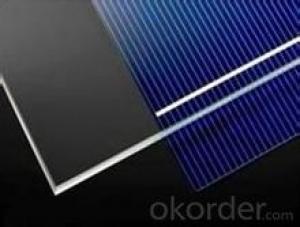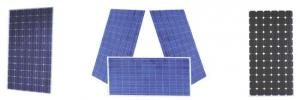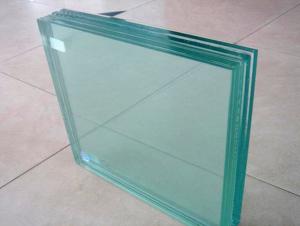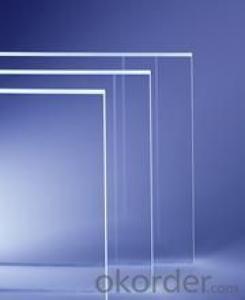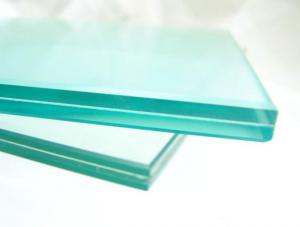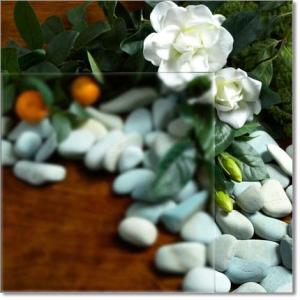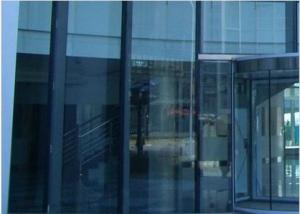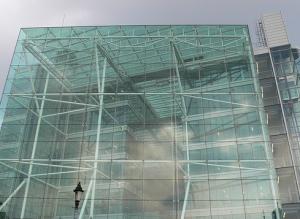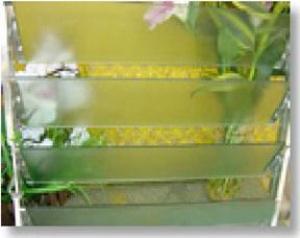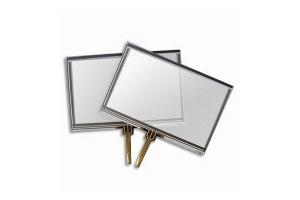Solar AZO Glass
- Loading Port:
- China Main Port
- Payment Terms:
- TT or L/C
- Min Order Qty:
- 100 m2 m²
- Supply Capability:
- 10000 m2 m²/month
OKorder Service Pledge
OKorder Financial Service
You Might Also Like
FTO Glass or AZO Glass is a kind of TCO glass mainly used for producing thin film solar cells as substrate/front TCO glass or seal glass/back glass. The right balance between transmittance, haze and conductivity of the TCO coating enable it to improve the cell efficiency of thin film solar cells embedded in photovoltaic modules.
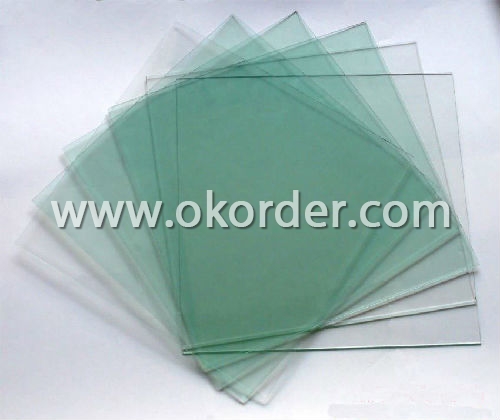
Features of Solar AZO Glass:
Light transmittance: >80%
Sheet resistance: 7-15Ω
Haze: 10%-50%
good laser etching properties
good weatherability and durability
High light transmittance, high mechanical strength, high planeness.
Product’s Description:
Type | TCO Glass(Ultra Clear Float Glass) |
Conductive Coating | SnO2: F Based or ZnO: Al Based |
Deposition | CVD |
Applications | Front glass or back glass for thin film solar cells (a-Si: H solar cells, μc-Si tandem solar cells and CdTe solar cells). |
Transmittance Curve:
Specifications:
Thickness: 3.2mm, 4mm,
Size: customized size
Applications of Solar AZO Glass:
FTO Glass or AZO Glass is widely applied in a-Si: H solar cells, μc-Si tandem solar cells and CdTe solar cells because of its potentials to lower the reflectivity between the interface and the absorber, to increase the light path into the absorber and to trap the solar energy into the absorber.

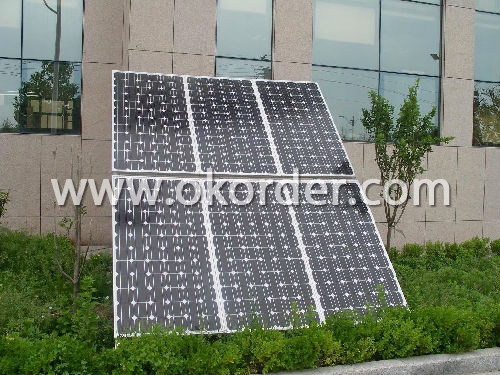
- Q: What is the glass DV board made of?.
- The glass DV plate is made of glass and consists of two or more glass laminated glass.
- Q: What kind of raw material is glass made of?
- Composition of common glass chemical oxides (Na2O, CaO, 6SiO2)Glass is usually divided into oxide, glass, and non oxide glass by major components. Non oxide glass varieties and a small number, mainly sulfur glass and halide glass. Chalcogenide glass anion for sulfur, selenium and tellurium, can stop short wave light by yellow, red, and near infrared light, which has low resistance, switching and memory characteristics. Having low refractive index, low dispersion, and often used as optical glass.
- Q: What is glass fiber reinforced nylon?
- GFR-nylon adds a certain amount of nylon resin in glass fiber reinforced plastic (FR-PA) and can be divided into long glass fiber reinforced nylon coating prepared (fiber and plastic particles equal, generally about 10mm) and the short cut fiber after mixing, or continuous fiber guide short glass fiber into double screw extruder continuous shear mixing of reinforced nylon (glass fiber length of about 0.0.7mm. 2.) belongs to the nylon polyamide amine in its main chain. Amino is polar, due to the effects of hydrogen bonding and attract each other. So the nylon easy to crystallize, can be made into high strength fibers. Polyamide as translucent cuticle toughness or white crystalline resin, often made of cylindrical pellets for polyamide plastic with molecular weight ranging from 15 thousand to 20 thousand.
- Q: Raw material, processing method and ratio of glass fiber reinforced plastic
- Raw material:Glass fiber reinforced plastics (FRP), also known as GFRP, that is, fiber reinforced plastics, generally refers to the use of glass fiber reinforced unsaturated polyester, epoxy resin and phenolic resin matrix. Reinforced plastics made from glass fiber or its products are referred to as glass fiber reinforced plastics or glass fiber reinforced plastics.
- Q: What is a hollow glass?
- The technical level of manufacturing hollow glass must be very high, to be also more difficult. The key lies in the quality of processing factories, high visibility point will do better. Hongguang glass company owns the most advanced glass processing equipment, equipment type complete automatic production line with hollow glass, has a professional R & D team, senior. In the manufacture of hollow glass which is an industry in the brothers ahead.
- Q: What's the price of 0.85mm thick plexiglass, please?
- Import plate material is better, about 900, but the price is more expensive, generally do not consider adopting, unless their own customers request, and canAt an accepted price.
- Q: Is the price of glass raw material the biggest proportion of quartz?
- The main are: quartz sand. And soda ash.
- Q: What are the materials for car windshields? Is there anything different than ordinary glass?
- At present, the front windshield of the car is mainly made of laminated glass and sandwich area toughened glass, and it can bear strong impact force.
- Q: Which is the best solar water heater tube?
- The color of the vacuum heat collecting tube is mainly blue and black, and the overall chromatic aberration is small. But black does not indicate the quality of vacuum heat collecting tube is good, because some manufacturers in order to cover up variegated, often made of pure black film. In fact, there is a certain error in the color of the vacuum heat collecting tube, which is unavoidable, and does not affect the heat collecting efficiency of the vacuum heat collecting tube.
- Q: What is quartz made of?
- 4, the construction of concrete, cementitious materials, road test material physical properties of materials, artificial marble, cement (cement standard sand) 5, chemical silicon compounds and water glass and other raw materials, sulfuric acid tower filler, amorphous silica powder 6, the main raw material of mechanical sand casting, grinding materials (sand, hard abrasive paper, sandpaper, emery cloth etc.)
1. Manufacturer Overview
| Location | Hebei,China (Mainland |
| Year Established | 1999 |
| Annual Output Value | |
| Main Markets | North America South America Eastern Europe Southeast Asia Africa Mid East Eastern Asia Western Europe |
| Company Certifications |
2. Manufacturer Certificates
| a) Certification Name | |
| Range | |
| Reference | |
| Validity Period |
3. Manufacturer Capability
| a) Trade Capacity | |
| Nearest Port | Tianjin |
| Export Percentage | |
| No.of Employees in Trade Department | |
| Language Spoken: | English,Chinese |
| b) Factory Information | |
| Factory Size: | 30,000-50,000 square meters |
| No. of Production Lines | 3 |
| Contract Manufacturing | OEM Service Offered |
| Product Price Range | |
Send your message to us
Solar AZO Glass
- Loading Port:
- China Main Port
- Payment Terms:
- TT or L/C
- Min Order Qty:
- 100 m2 m²
- Supply Capability:
- 10000 m2 m²/month
OKorder Service Pledge
OKorder Financial Service
Similar products
Hot products
Hot Searches
